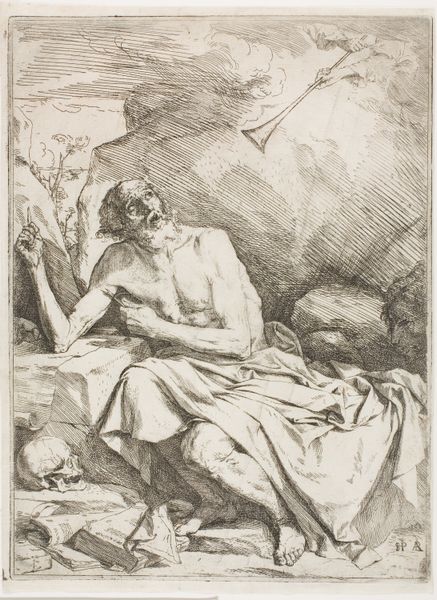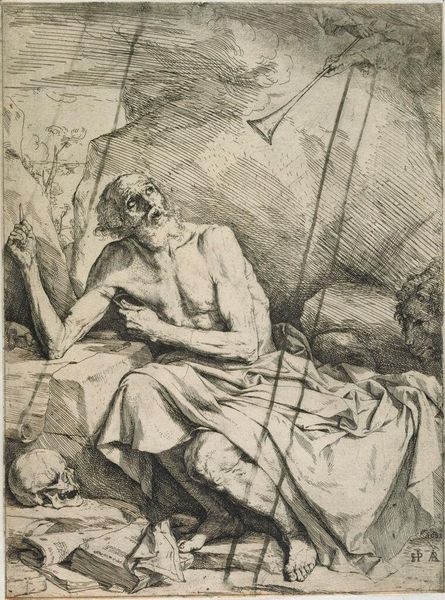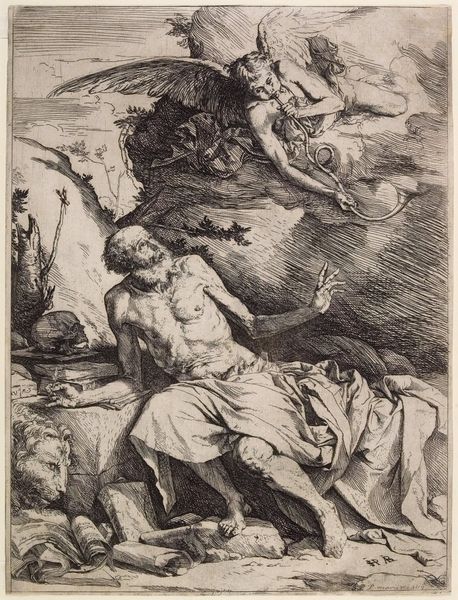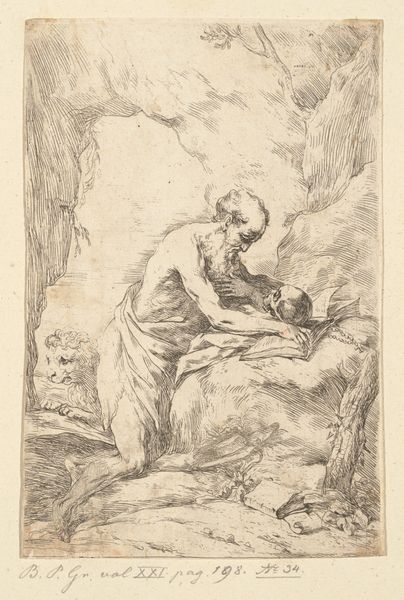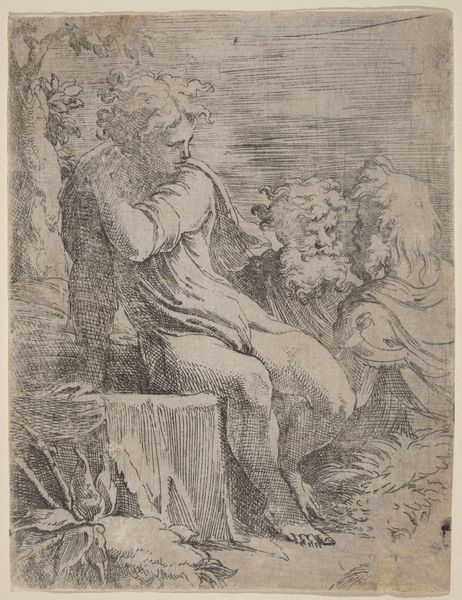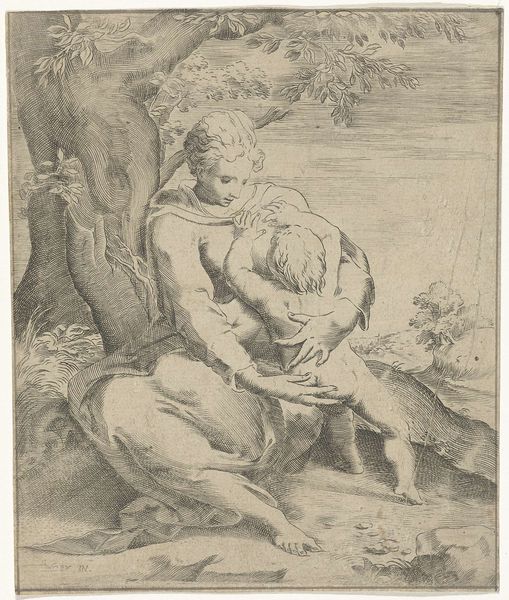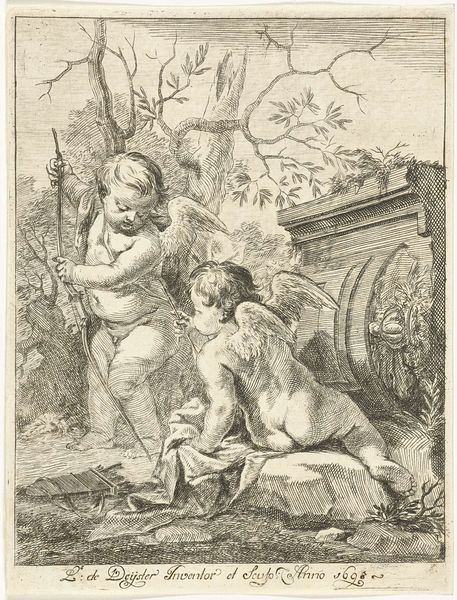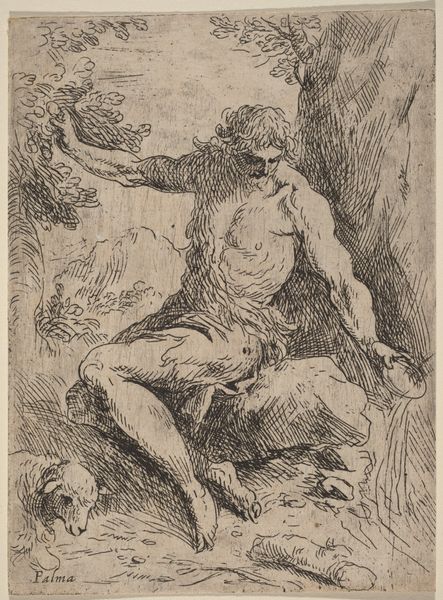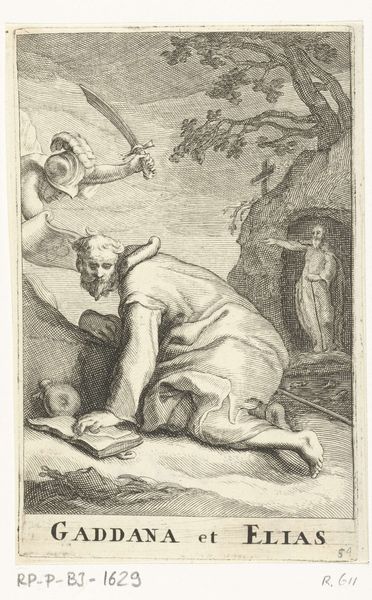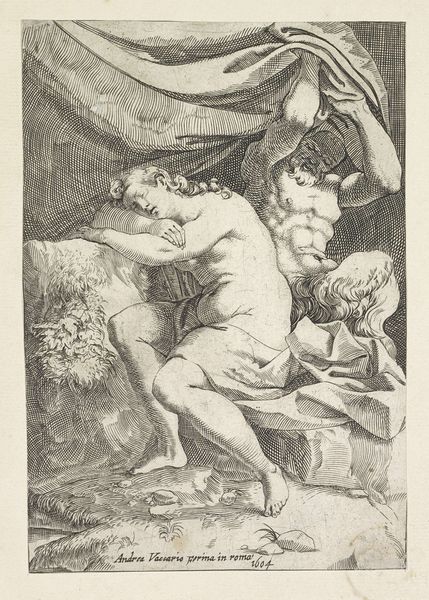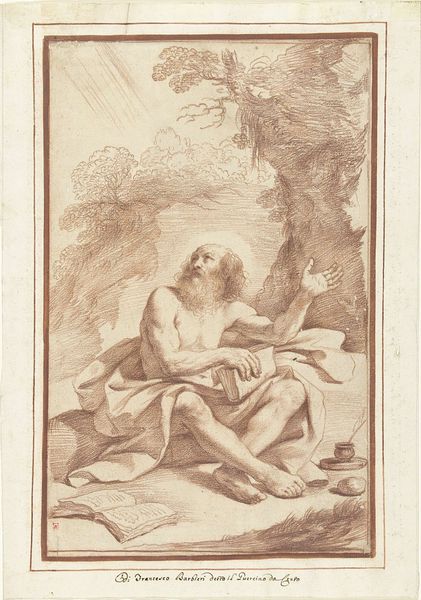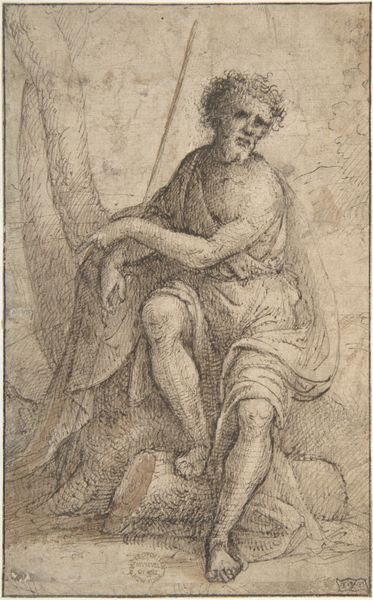
drawing, etching, paper, dry-media, ink, pen, charcoal, engraving
#
portrait
#
drawing
#
baroque
#
etching
#
charcoal drawing
#
paper
#
dry-media
#
ink
#
pencil drawing
#
pen
#
portrait drawing
#
charcoal
#
history-painting
#
engraving
Dimensions: height 326 mm, width 240 mm
Copyright: Rijks Museum: Open Domain
Jusepe de Ribera created this drawing of Saint Jerome with pen and brown ink wash in the 17th century, although the exact date is unknown. Here, the saint looks up to the heavens at a trumpet, an allusion to the Last Judgement. Jerome lived in the 4th and 5th centuries and translated the Bible into Latin. He became a popular subject for artists in the Catholic Reformation, a period when the Church was responding to challenges from Protestant reformers. Spanish artists like Ribera often depicted Jerome in scenes of penitence, scholarship, or divine inspiration. This drawing relates to wider shifts in religious institutions at the time. Ribera likely made this drawing in Naples, then ruled by Spain, where the Catholic Church was a major patron of the arts. To fully understand the drawing, we need to explore the complex interactions between artistic patronage, religious reform, and the rise of print culture in early modern Europe. Art historical scholarship helps us to do that, drawing on primary source documents from the period to understand how the image might have been received in its own time.
Comments
No comments
Be the first to comment and join the conversation on the ultimate creative platform.
